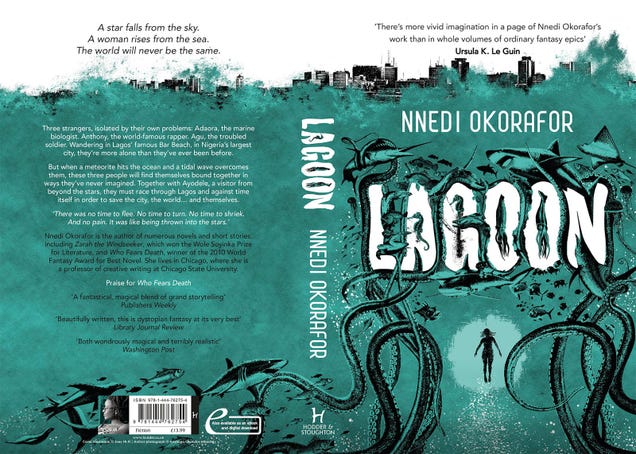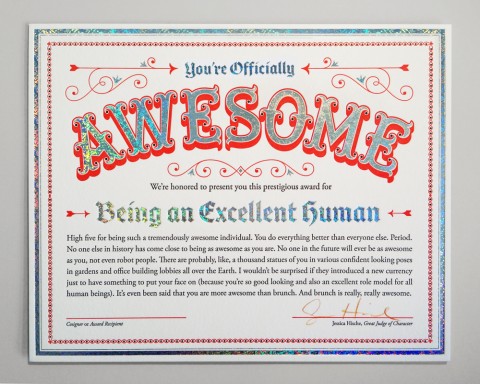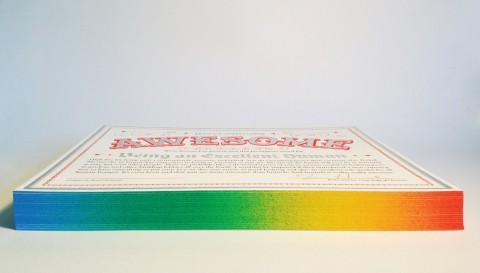Juliawmartin
Shared posts
Amazon's Cloud Is So Pervasive, Even Apple Uses It
JuliawmartinI just feel like we have a lot of thinking to do.

Amazon's cloud service dominates the Internet so thoroughly that it's scarcely worth noting new customers. Unless, that is, the customer in question is ... Apple.
Tucked away in a Monday New York Times piece on the online-storage price wars lies this brief but interesting nugget (AWS is Amazon Web Services—i.e., Amazon's cloud):
Apple's iCloud storage service and other parts of Apple, along with operations at several large banks, run inside A.W.S., say people familiar with the service who spoke on the condition they not be named so they could sustain relations with the powerful cloud company.
You have to love the Timesian sourcing on that one, by the way, which at 24 words comes in five words longer than the actual information attributed to said people. Not to mention the possibly intentional ambiguity of which "powerful cloud company" these unnamed folks so desperately want to sustain relations with. (Both Amazon and Apple would qualify, depending on how literally you want to read this sentence.)
See also: Amazon's Cloud Is The Fastest Growing Software Business In History
In any event, this revelation is intriguing in a couple of respects. It's certainly not the first time Apple has used an outside company to provide Web services—see, for instance, Akamai, which delivers software, music and video downloaded from Apple's website and the iTunes store.
But Apple is usually obsessed with micromanaging every aspect of its technology and services. So some of its users might be surprised to learn that they're storing their backups and other personal data not on Apple servers, but on ones rented from Amazon. It's not totally clear that anyone should care about that, but you never know.
Of course, iCloud is also in the midst of a big transition, as it preps new consumer-storage services as part of Mac OS X Yosemite and its CloudKit service designed to provide cloud storage for iOS apps. And Apple has been building out data centers at a furious pace, with the latest one slated to start up sometime this year in Prineville, Ore. (My former colleague Taylor Hatmaker snapped some photos of the construction for ReadWrite last year.)
See also: Apple Is Taking On Amazon And Google With A Big Server Giveaway
So possibly Apple is just short on server capacity until Prineville spins up. Though it's understandable why the company might not want to advertise its apparent dependence on Amazon at the moment, as the news runs slantwise to Apple's notable—and heavily marketed—environmental push to run all its data centers on renewable power. (Amazon's cloud scored 3 Fs and a D in the latest Greenpeace report on data-center energy use thanks to heavy reliance on power from coal, nuclear and natural gas.)
Apple's PR team didn't get back to me when I asked them about the company's use of Amazon's cloud. But the company didn't exactly deny the NYT report:
Amazon would not comment on confidential customer agreements. An Apple spokesman noted that Apple had its own data centers in four locations jn the United States and said that "the vast majority" of data in services like iTunes, Maps and the App Store ran on its own computers. Apple uses other facilities as well, he said.
The First Official Dancing Groot Toy Has Arrived!
Juliawmartinhttp://www.stereogum.com/706682/download-bon-ivers-10-best-cover-songs/franchises/listomania/ if we still had goodlistnr I'd make us all jam to these.
Watch Kate Bush Documentary Running Up That Hill Feat. St. Vincent, Big Boi, Bat For Lashes
Next week, Kate Bush will perform her first concert in 35 years at London’s Hammersmith Apollo. She last toured in 1979, following the release of Lionheart. BBC 4 has released an hour-long documentary called Running Up That Hill that reflects on Bush’s long and enigmatic career. It features appearances from Peter Gabriel, Elton John, Pink Floyd’s David Gilmour, Tori Amos, Annie Clark, Big Boi, Bat For Lashes’ Natasha Kahn, and more. Watch the whole thing below.
It's Ridiculous To Say Science Fiction Books Aren't Based On Real Life
JuliawmartinI'm about halfway through Lagoon at the moment and it's great. It would make a really great movie I thin, and is written that way.
Inverted Zoo: Enclosure-Free Design Puts Animals in the Open
JuliawmartinI don't know if anyone ever went to the Bronx Zoo Prairie dog exhibit, but this feels like a similar concept.

Aiming to change the nature of zoo experiences for species on both sides of the glass, Zootopia radically reverses traditional layouts and changes conventional expectations. It almost looks as if the humans were on the display while the animals are given the most space possible to roam.

Being created in conjunction with the Givskud Zoo and Safari Park in Denmark, this architectural design by Bjarke Ingels Group (BIG) is in part a response to some long-standing criticisms of zoos, attacked for putting animals into barred, walled and windowed boxes.


Instead, this architecture is meant to disappear, with barriers becoming effectively invisible and the experience more seamless for humans and animals alike. Rolling hills and strategic rocks replace over dividers, creating an environment that looks, feels and ultimately is more natural.
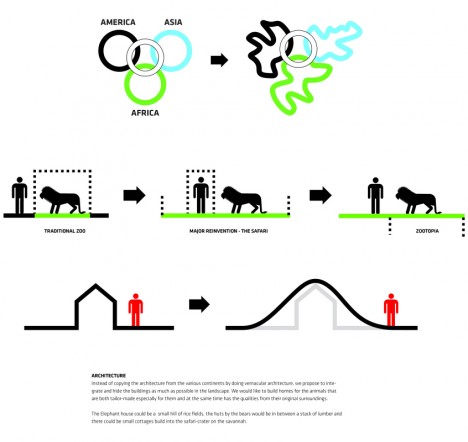
Additionally, habitats are being designed around the spatial needs and social desires of individual species, granting them the freedom as well as privacy required for each animal type to both survive and thrive.

For visitors, a central entrance gives a wide view in all directions to section spinning out from the middle and representing various climates and regions. Travel through the zoo will happen on foot but also by bike, boat and sky car.


The idea itself is not entirely novel – there are many drive-through zoos and wildlife refuges that attempt to simulate more organic conditions and break down barriers between humans and the animals they are visiting. Still, for a large-scale zoo, this approach is rare is not unprecedented in its aims and scope.
Want More? Click for Great Related Content on WebUrbanist:

100+ of the World’s Weirdest Plants and Animals
Here are over 100 of the most strange and amazing plant and animal species in the world - highlighting both the most beautiful and terrifying sides of Mother ... Click Here to Read More »»
Open House(s): 10 Wonderful Open-Plan Home Designs
Open floor plans allow even the smallest cottage to seem spacious and luxurious. These 10 homes with open plans are the pinnacle of modern architectural design. Click Here to Read More »»
Free to Forge: Open Source 3D-Printed Metal Mesh Furniture
Completed by a robot programmed to extrude material in midair, the world’s first fully 3D-printed metal furniture shows off a fresh range of ... Click Here to Read More »»



[ By WebUrbanist in Architecture & Public & Institutional. ]
[ WebUrbanist | Archives | Galleries | Privacy | TOS ]
Carrie Brownstein Finishing Nora Ephron Screenplay Lost In Austen
Juliawmartinhuh, what?
Long ago, Carrie Brownstein went from being a furiously talented punk rock singer and guitarist and songwriter to a furiously talented punk rock all-around media presence. At this point, Brownstein is more famous for Portlandia than for any of her musical pursuits, and she’ll soon make her feature acting debut in the Todd Haynes film Carol. Still, it’s a bit of a shock to learn of Brownstein’s next career move: Romantic-comedy screenwriter!
You’re Officially Awesome
JuliawmartinTHere are so many people I want to get this for.
This is the best thing ever: You can buy a Certificate of Awesomeness to give to whoever deserves one, designed and signed by Jessica Hische. Look! It has rainbow edge-painting! Over the top? Yes!
All certificates ship with a rainbow pencil so the recipient or co-signer can add their own signature. That Jessica Hische! Always coming up with awesome stuff!
BitTorrent's Science Fiction Series Looks Like an American Apparel Ad
Here is the first extended clip from BitTorrent's experiment with pay-for-play content. The file-sharing software company has partnered with Rapid Eye Studios to create a series called Children of the Machine . Our first look left us uncomfortable but intrigued.
Can Science Explains The Incredible Hulk? Yes, Mostly!
JuliawmartinI'm watching this.
“The world is divided between kids who grow up wanting to be...
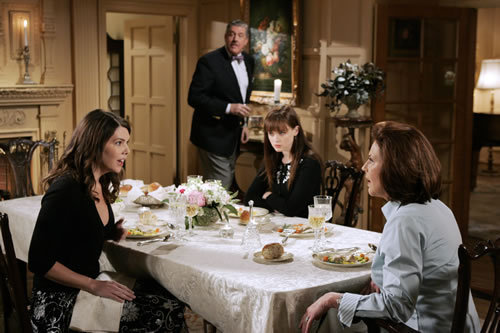
“The world is divided between kids who grow up wanting to be their parents and those like us, who grow up wanting to be anything but. Neither group ever succeeds.”
― Richard Russo, Straight Man
I Don't Know How to Talk to White People About Ferguson
JuliawmartinThis is a pretty good article. also, seems like the cops are killing a lot of people lately (http://gawker.com/hard-working-father-of-five-dies-in-custody-after-mul-1622147958)
I don’t know how to tell people that I’d rather be let down by white society than be let down by white individuals. Read more
A portable router that conceals your Internet traffic

The news over the past few years has been spattered with cases of Internet anonymity being stripped away, despite (or because) of the use of privacy tools. Tor, the anonymizing “darknet” service, has especially been in the crosshairs—and even some of its most paranoid users have made a significant operational security (OPSEC) faux pas or two. Hector “Sabu” Monsegur, for example, forgot to turn Tor on just once before using IRC, and that was all it took to de-anonymize him. (It also didn’t help that he used a stolen credit card to buy car parts sent to his home address.)
If hard-core hacktivists trip up on OPSEC, how are the rest of us supposed to keep ourselves hidden from prying eyes? At Def Con, Ryan Lackey of CloudFlare and Marc Rogers of Lookout took to the stage (short their collaborator, the security researcher known as “the grugq,” who could not attend due to unspecified travel difficulties) to discuss common OPSEC fails and ways to avoid them. They also discussed their collaboration on a set of tools that promises to make OPSEC easy—or at least easier—for everyone.
Called Personal Onion Router To Assure Liberty (PORTAL), the project is a pre-built software image for an inexpensive pocket-sized “travel router” to automatically protect its owner’s Internet traffic. Portal provides always-on Tor routing, as well as “pluggable” transports for Tor that can hide the service’s traffic signature from some deep packet inspection systems.
Read 12 remaining paragraphs | Comments
“My God, he couldn’t help thinking, how terrible it is to...
Juliawmartinand wine, there's also a lot of wine in adulthood.
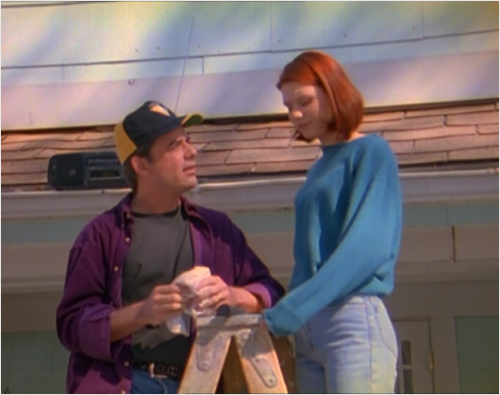
“My God, he couldn’t help thinking, how terrible it is to be that age, to have emotions so near the surface that the slightest turbulence causes them to boil over. That, very simply, was what adulthood must be all about — acquiring the skill to bury things more deeply. Out of sight and, whenever possible, out of mind.”
― Richard Russo, Empire Falls
Some Things I Will Miss About Brooklyn
JuliawmartinWhen I was a kid the guy across the street from us in Carrol Gardens had a flock of pigeons and I would watch them fly around over our houses back and forth in this cool pattern.
 On my first day in Brooklyn, twenty-one years ago, I took the subway from my neighborhood, Brooklyn Heights, to its terminus at the tip of Coney Island. I walked the ten miles back, slowly weaving my way through a loose confederation of neighborhoods, held together by subways and buses. Statistically, since then, Brooklyn has changed for the better: It is safer. It is cleaner. But its bumps and edges, the defining features of those neighborhoods, have been smoothed and polished away into an increasingly continuous, glossy surface known as “Brooklyn.” Now I’m leaving.
On my first day in Brooklyn, twenty-one years ago, I took the subway from my neighborhood, Brooklyn Heights, to its terminus at the tip of Coney Island. I walked the ten miles back, slowly weaving my way through a loose confederation of neighborhoods, held together by subways and buses. Statistically, since then, Brooklyn has changed for the better: It is safer. It is cleaner. But its bumps and edges, the defining features of those neighborhoods, have been smoothed and polished away into an increasingly continuous, glossy surface known as “Brooklyn.” Now I’m leaving.
![]()
 (Pigeons over Bushwick)On most afternoons, flocks of pigeons swarm above Maria Hernandez Park in Bushwick. They’re owned by pigeon keepers, who breed and tend to them on nearby rooftops. The practice, part sport, part art, was first brought over by Italians in the early 1900s. At one point, well over a thousand men in Brooklyn kept pigeons. About a hundred such keepers are left—mostly Dominican and Puerto Rican men, primarily in Bushwick and East New York. You find them on whichever roofs they can use. A few are lucky enough to own their building, or are supers in buildings with roof access. Most, however, find abandoned buildings with unclaimed roofs and turn them into pigeon homes.
(Pigeons over Bushwick)On most afternoons, flocks of pigeons swarm above Maria Hernandez Park in Bushwick. They’re owned by pigeon keepers, who breed and tend to them on nearby rooftops. The practice, part sport, part art, was first brought over by Italians in the early 1900s. At one point, well over a thousand men in Brooklyn kept pigeons. About a hundred such keepers are left—mostly Dominican and Puerto Rican men, primarily in Bushwick and East New York. You find them on whichever roofs they can use. A few are lucky enough to own their building, or are supers in buildings with roof access. Most, however, find abandoned buildings with unclaimed roofs and turn them into pigeon homes.

Kevin, a childhood friend of Mike Tyson’s, started keeping pigeons at eight, while growing up in East New York. “I have had a few problems. Growing up here it’s hard not to, but that’s all behind me now,” he said. “God is now shining his light on me. For the last fiteen years I have stayed away from everything. Now I spend my evenings on the roof with my birds. The pigeons don’t talk back to you and my wife always knows where I am. I can put everything behind me when I am up on the roof.”
Slice was a drug dealer when, at seventeen, he killed another dealer and spent twenty years in jail. Now he is “locked down by my wife and birds. Both of them keep me out of trouble,” he said. “When I am up here on the roof, I am in another world. I can leave all the past behind. All that below us, that’s gone.”
![]()
 (Regular in front of bar)Sunset Park was once filled with Norwegians and other Northern Europeans who immigrated to work the docks along the Brooklyn waterfront. That ended after 1969: The docks started closing, and Norway found oil. Now the neighborhood, especially around Soccer Tavern’s home on Eighth Avenue, is predominately Chinese.
(Regular in front of bar)Sunset Park was once filled with Norwegians and other Northern Europeans who immigrated to work the docks along the Brooklyn waterfront. That ended after 1969: The docks started closing, and Norway found oil. Now the neighborhood, especially around Soccer Tavern’s home on Eighth Avenue, is predominately Chinese.
The Soccer Tavern, founded in 1932, is the only straggler left from that period. It is the single business on a stretch of fifteen blocks not dominated by or directed at the Chinese population. Across the street from the bar is a market that takes up the entire block, selling, amongst other things, live bullfrogs.
The bar seats are usually occupied by older residents who moved to Sunset Park long ago from Norway, Germany, Austria, and other parts of Europe. Some of them are very old, and very fond of drink. “This is my nursing home,” said Mary. “If I get too drunk Jimmie knows how to make sure I get home.”
A large group of Chinese regulars drink bottles of Budweiser and eat one-dollar sticks of roast meat from a vendor outside in one corner of the bar, clustered around a few tables. Some of the European regulars are not entirely comfortable with them: “This neighborhood isn’t the same,” said a younger man. “My friends started leaving and those guys started coming into our country.”
“There used to be six bars on this stretch, all filled,” Jimmy, the Irish owner of the Soccer Tavern, told me. “Now this is the only one. I have only survived because of my Chinese customers. They are great. I run the only Chirish bar in all of New York.”

![]()
 (Children posing with RC plane)Floyd Bennett Field was New York’s first municipal airport. Later, it was a naval air station. Now it’s a large park used by a collection of the oddly obsessed who need large swaths of empty, flat concrete, like the radio-controlled car and truck guys, who race tiny vehicles down an old runway. In one hand, they twiddle a remote control and in another they hold a joint or a beer. They obsess over fine-tuning their little engines, revving them up to high pitches and clouds of smoke. Indifferent women stand aside, trying to keep the smaller kids from getting in the way. “If this is what makes him happy. I’m just glad he isn’t racing real cars.”
(Children posing with RC plane)Floyd Bennett Field was New York’s first municipal airport. Later, it was a naval air station. Now it’s a large park used by a collection of the oddly obsessed who need large swaths of empty, flat concrete, like the radio-controlled car and truck guys, who race tiny vehicles down an old runway. In one hand, they twiddle a remote control and in another they hold a joint or a beer. They obsess over fine-tuning their little engines, revving them up to high pitches and clouds of smoke. Indifferent women stand aside, trying to keep the smaller kids from getting in the way. “If this is what makes him happy. I’m just glad he isn’t racing real cars.”
Miniature planes, each lovingly crafted, use another patch of old runway. The small planes, controlled by a group with more elaborate radio controllers, accelerate down the runway before lifting off, banking over the radio controlled cars and then over the marshes, like a tiny homage to the old airfield.

Another old runway is used to train sanitation workers to drive the massive trucks. NYC garbage trucks circle around and around, almost as if playing a slow motion, inertia-intense, game of tag. NYPD helicopters use another as a storage facility and landing pad. Scattered across the park are old massive hangers, some repurposed as sports complexes. The others sit behind fences, ever so slowly collapsing back into the ground. A husband taught his wife how to parallel park; a solitary man hit golf balls into the bay. Another man tried to teach his girlfriend how to kiss; well, that’s what it looks like, at least.
![]()
 (Children in East NY street surfing)The streets are the only summer home for much of Brooklyn. As the heat intensifies, apartments disgorge their residents and the hydrants are opened—legally, by having a spray cap installed by the fire departments, or otherwise, since on almost every block someone owns a gigantic wrench.
(Children in East NY street surfing)The streets are the only summer home for much of Brooklyn. As the heat intensifies, apartments disgorge their residents and the hydrants are opened—legally, by having a spray cap installed by the fire departments, or otherwise, since on almost every block someone owns a gigantic wrench.
Mothers wash their smaller children in buckets filled from the hydrants. Others march their children out in bathing suits with soap and shampoo. Passing drivers slow down, and steer their cars slowly through the spray, turning around to clean both sides. A broken table turned upside down and bent, placed inches from the spray, shoots the water in an arc that reaches across the street and into a basketball court. A thick plastic tarp is laid across the street, slicked with water and dishwashing liquid, and turned into a giant slip and slide.

As midnight approached, police in cars broke up the crowds and told the children to go home. The water ran down the street into the corner gutters that collected the afternoon’s detritus: beer cans, vodka bottles, ice cream wrappers, potato chip bags, and a few stray condoms.
![]()

Sunset Park, the neighborhood, is named after Sunset Park, the park, which is a wonderful place to watch a sunset. Roughly the size of four square city blocks, the park is centered on a ridge that faces west towards the water of New York harbor. The park is pitched downwards, sloped in its lower half at an angle like a movie theater. At the top of the park, where it flattens, is a huge municipal pool, and sprinklers, and volleyball courts, and playgrounds, and basketball courts, and soccer pitches.
The neighborhood is divided roughly in two : From the water to Fifth Avenue is mostly Mexican and Central Americans; from Sixth to Twelfth Avenues is mostly Chinese. The park is a seam connecting the two very different cultures that live together because of a shared need for affordable rent. On summer afternoons, it feels as if the entire neighborhood unites in the park. Solitary boom boxes blast high-pitched music not meant for blasting: Chinese women dance ever so slowly, while Mexican families picnic to Tejano music. Women selling mangos on sticks jingle tiny bells. Children—playing soccer, or tag, or volleyball, or flying kites, or skateboarding—yelp.
![]()
 (Baker at Oneg Heimishe)The insular Satmar Hasidic community of Williamsburg has few obvious offerings for visitors. There are wig stores for the ladies, with strict rules about the presence of men. There are Shtreimel stores for men, selling the large cylindrical fur hats that are worn on Shabbat and Jewish holidays, the ones that look like chocolate cakes. The corner stores, Satmar bodegas, sell Mayim Chaim Cola rather than Coke, as well as other kosher replacement products. Buying a Shtreimal is restricted to the Satmars; buying a Mayim Chaim Cola is not.
(Baker at Oneg Heimishe)The insular Satmar Hasidic community of Williamsburg has few obvious offerings for visitors. There are wig stores for the ladies, with strict rules about the presence of men. There are Shtreimel stores for men, selling the large cylindrical fur hats that are worn on Shabbat and Jewish holidays, the ones that look like chocolate cakes. The corner stores, Satmar bodegas, sell Mayim Chaim Cola rather than Coke, as well as other kosher replacement products. Buying a Shtreimal is restricted to the Satmars; buying a Mayim Chaim Cola is not.

The Oneg Heimishe Bakery isn’t open on Saturdays or on Jewish holidays, high or low or in between, of which there are many. It isn’t open now, or any time during the summer, because the family that runs it moves upstate to Sullivan County, like many Satmars do. There are other bakeries in the neighborhood that don’t close during the summers, that have longer hours, but as their owners admit, “Oneg Heimishe has the been doing it the longest.”
At the other end of Lee Avenue, toward the water, where it runs into Division Avenue, huge towers of low-income housing, occupied by mostly Satmar families, surround small parks, like the Roberto Clemente ball field. Kids fill the park, running around playing tag. When I asked one of them, “Who is Roberto Clemente?” they shrugged.
“He was a famous baseball player,” I said.
They children asked back, in unison, without irony, “What is baseball?”
![]()
 (Looking out from Bait and Tackle at Red Hook)Because Red Hook is severed from the rest of Brooklyn by the BQE, the difficulties of the borough during the sixties, seventies, and eighties, hit it as hard as any other neighborhood. Now, the recent upswing in Brooklyn, shifting into euphoria, has been slower to make its way to Red Hook. Rising rents haven’t yet pushed out all the working artists. Co-ops haven’t entirely replaced working industry, and the few destination restaurants, serving whatever the fuck is in vogue, still have much of the neighborhood in them.
(Looking out from Bait and Tackle at Red Hook)Because Red Hook is severed from the rest of Brooklyn by the BQE, the difficulties of the borough during the sixties, seventies, and eighties, hit it as hard as any other neighborhood. Now, the recent upswing in Brooklyn, shifting into euphoria, has been slower to make its way to Red Hook. Rising rents haven’t yet pushed out all the working artists. Co-ops haven’t entirely replaced working industry, and the few destination restaurants, serving whatever the fuck is in vogue, still have much of the neighborhood in them.
Visitors to Red Hook, attracted by the views and the newer restaurants, or brought in by a perverse desire to make a day of IKEA, generally make their way to Sunny’s Bar, drawn by its impressive history, and by the guidebooks.
Bait and Tackle bar doesn’t get that attention, partly because it doesn’t have the history—it’s only only ten years old, not, like, a hundred. It does have everything a great bar needs: A genuine feel, cheap drinks, interesting regulars who are in fact slightly irregular, forgiving bartenders, an Irish owner, great music, enough quiet to have a real conversation, and long hours.

![]()
 (Waiter, Yemen Cuisine)Atlantic Avenue, especially near its intersection with Court Street, has long been a center of Middle Eastern culture in New York City. Once primarily Syrian and Lebanese, over the last thirty years it has become equally Yemeni. An influx of a particular ethnic group is sometimes a sign of bad things back home; in Yemen, one the poorest Middle Eastern countries, a long and violent conflict between the south and north has left the economy in disarray.
(Waiter, Yemen Cuisine)Atlantic Avenue, especially near its intersection with Court Street, has long been a center of Middle Eastern culture in New York City. Once primarily Syrian and Lebanese, over the last thirty years it has become equally Yemeni. An influx of a particular ethnic group is sometimes a sign of bad things back home; in Yemen, one the poorest Middle Eastern countries, a long and violent conflict between the south and north has left the economy in disarray.
Three Yemeni restaurants are clustered on the same block as a newish Trader Joe’s: Hadramout Restaurant at 172 Atlantic, Yemen Café at 176, and Yemen Cuisine around the corner at 145 Court Street.
Yemen Café, up a flight of stairs, is the oldest, and also the most comfortable for the Trader Joe’s crowd. It is well lit, well acquainted with US tastes, and fluent in English.
Hadramout, down a flight of stairs, is less so. It is harshly lit, with schoolroom-like tables littered with newspapers in Arabic. A TV in the corner, above the self-serve tea table, runs continual loops of Middle Eastern news. It serves Yemenites almost exclusively, and at times stays open until 6 am for the late night workers; other times, it stays closed for long stretches.

When they leave, often after midnight, they pass two huge dumpsters on the sidewalk in front of Trader Joe’s, filled with bags and bags of food beyond its expiration date. Sometimes young Brooklynites, Freegans, climb out of the dumpsters, holding the bags.
![]()
 (Host, Tatiana Restaurant)The Russian speakers who first settled in Brighton Beach—mostly Jewish refugees from Ukraine back in the nineteen fifties—couldn’t believe their luck. “Such a beautiful location, and nobody but us and the poor seemed to want to live here. The beach is better than the Black Sea, and the weather warmer than Kiev,” said Ivan.
(Host, Tatiana Restaurant)The Russian speakers who first settled in Brighton Beach—mostly Jewish refugees from Ukraine back in the nineteen fifties—couldn’t believe their luck. “Such a beautiful location, and nobody but us and the poor seemed to want to live here. The beach is better than the Black Sea, and the weather warmer than Kiev,” said Ivan.
Brighton Beach is fully formed. Newer immigrants still come; they are often from Russia and Ukraine or places close to it, like Azerbaijan or Tajikistan. Everyone speaks Russian. The usual pattern of immigration—first wave moves into neighborhood, gets wealthier, moves out, hasn’t fully played out in Brighton Beach. “I am not moving,” said Sonya, I am happy here. I have everything I could want.”
Brighton Beach is a beach town in more than just name; much of the neighborhood’s life is played out along the wooden boardwalk. When the summer brings in the rest of New York, or at least those without access to cars and second homes, the boardwalk seems to change its identity, with other languages mixed in with Russian. It reverts when the sun sets. Families come down from the apartments that hover over the boardwalk to eat and celebrate at the outdoor tables of the restaurants lining it. Of all of them, Tatiana’s is the largest and best.
Even in the fall and winter, when the visitors have left, families still gather to celebrate underneath Tatiana’s large green tent on the boardwalk. When the night turns cold, the waiters and waitresses offer guests blankets, wrapping them around their shoulders. Platters of food, all huge portions, come in waves: smoked fish, soups, and seafood. Vodka and water are consumed in almost equal measure. Between courses, smokers lean against the boardwalk railing, across from the restaurant, looking off to the ocean.

On a cool fall Sunday night in October, next to Tatiana’s, a group of students hung a white blanket on a wall. Plastic chairs were dragged out, and a Russian art movie played onto the blanket; gusts of wind distorted the movie just a bit. An older man, taking a smoking break, stopped to watch the film. One of the students offered him a hit from a joint. He waved his hand no and disappeared, only to return later with a bottle of Vodka. He handed it to the students, smiled, and went back to join his family for dinner.
![]()
 (Michael, coming home)Before Brooklyn became a brand, the Brooklyn Bridge, to most, represented Brooklyn. Tourists would walk the pedestrian walkway, along a bouncy wooden track riding between two gently arced cables, up to the apogee, stop, take pictures that have been taken a million times before, and then walk back to Manhattan, determined to get back in time to shower and dress before their Broadway show began.
(Michael, coming home)Before Brooklyn became a brand, the Brooklyn Bridge, to most, represented Brooklyn. Tourists would walk the pedestrian walkway, along a bouncy wooden track riding between two gently arced cables, up to the apogee, stop, take pictures that have been taken a million times before, and then walk back to Manhattan, determined to get back in time to shower and dress before their Broadway show began.
The few who walked the entire length were almost always from Brooklyn: People commuting very early in the morning or late in the evening. The commuters were a small group that rarely changed, many who recognized each other from their daily walks. Another reminder that Brooklyn can be just a big small town.

There was a Chinese woman, always dressed in the same sky blue sweat suit, regardless of the weather, who walked to Brooklyn and back. She waved to everyone she passed. There was a Jamaican man who rode his modified moped, cheap radio duck-taped to dashboard, who almost hit and angered everyone he passed. There was Michael, who would walk back to his Cobble Hill home from his night of collecting cans and bottles from the just-closed bars of Manhattan. His tower of cans always seemed close to collapsing, but never did.
As Brooklyn became popular, tourists no longer stopped at the top. They went to Brooklyn for Brooklyn, not just for the view. Then the merchants came, selling sodas, selling sad NYC art, selling whatever other trinkets tourists might want. They clustered near the top, the middle of the walk, turning it into a Brooklynland spin-off of Disneyworld.
If you walk the bridge early or late enough, the tourists and merchants are gone. A few commuters are still there, walking from their homes in Brooklyn to work in Manhattan, or back the other way. At the top, during those empty hours, you can find a rarity in Brooklyn: Solitude.
![]()
Chris Arnade received his PhD in physics from Johns Hopkins University in 1992. He spent the next twenty years working as a trader on Wall Street. He left trading in 2012 to focus on photography. His "Faces of Addiction" series explores addiction in the south Bronx neighborhood in New York City.
0 CommentsHere’s another Comcast cancellation horror story, with video evidence
This story will sound familiar, but it's not a repeat. A month after AOL's Ryan Block posted an audio recording of a Comcast cancellation call that even a Comcast executive called "painful to listen to," another customer has posted a video showing how difficult it was for him to cancel service.
Chicago resident Aaron Spain explained in the video Monday that he was on hold for more than three hours, showing the time of the call on his phone as proof. He was calling to cancel Comcast "after a month of trying to get them to fix my service," he said. Spain was transferred to the retention department, but didn't actually get to talk to anyone. After using a different phone to call back the same number, Comcast's automated assistant told Spain, "I'm sorry, but our offices are now closed."
Comcast admitted fault, telling news sites today that “Under no circumstances is this the experience we want our customers to have. Our goal is to be respectful of our customers’ time and fix any issues the first time. We take this very seriously, and after investigating Mr. Spain’s situation, we want to apologize to him and acknowledge that his experience was completely unacceptable.”
Read 3 remaining paragraphs | Comments
Photo: Baby musk ox struts along
JuliawmartinAH! IT'S TOO CUTE!
 This young musk ox was photographed in Nome, Alaska
This young musk ox was photographed in Nome, Alaska
Dogs With Flower Crowns Promote Pit Bull Adoption
Juliawmartinwell this is a cute situation.

Photographer Sophie Gamand's new series is called "Flower Power," and its an attempt to fight the pit bull stereotype. Because a dog's breed affects its behavior only so much .
NYC’s oldest independent movie theatre, Brooklyn Heights Cinema, is closing
JuliawmartinWell that sucks

Show’s over. via Facebook Everyone seems to be getting priced out around here, and apparently the city’s oldest independent cinema is no exception. Brooklyn Heights Cinema (70 Henry St.) will close at the end of the month, according to DNAinfo. Kenn Lowy, the theatre owner, said the property, which he does not own, had been sold and will likely close August 27. Fortunately, Lowy started looking at new locations once he learned the historic building would be listed for $7.5 million. He said he’s been eyeing spots, possibly in DUMBO, to open a new site this October and plans to keep the original name. He’d raised $30,000 in a Kickstarter campaign for theatre equipment and said everything he’d recently bought would be moved to the new location. The situation has us a bit bummed, but at least Brooklyn Heights residents still have the somewhat nearby Cobble Hill Cinema if they don’t want to… Read More
Seriously, Keep Drinking, Says "Science"
Juliawmartinsome news!
 "Scientists" have been sending out some pretty mixed messages when it comes to drinking delicious, delicious alcohol. Everyone's drinking too much, but some of us aren't drinking enough, and either way we're all either going to live forever or die immediately of booze-induced cancer. This week, one addiction and public health specialist penned a diatribe once again touting the health benefits of alcohol, claiming that science proves that teetotalers have shorter lifespans than drinkers. We'll take it! [ more › ]
"Scientists" have been sending out some pretty mixed messages when it comes to drinking delicious, delicious alcohol. Everyone's drinking too much, but some of us aren't drinking enough, and either way we're all either going to live forever or die immediately of booze-induced cancer. This week, one addiction and public health specialist penned a diatribe once again touting the health benefits of alcohol, claiming that science proves that teetotalers have shorter lifespans than drinkers. We'll take it! [ more › ]Amazon’s new mobile card reader waltzes onto Square and PayPal’s dance floor
Juliawmartinheeeeeeeeeere's johnny.

Amazon just announced its new Local Register service, a mobile card reader and app that allows merchants to swipe cards and take payments without a traditional card reader. The service is akin to those from Square and PayPal, which both use a physical card reader that plugs into a phone or tablet's headphone jack and lets customers swipe magnetic stripe cards.
As Amazon's done many times before with books, tablets (not phones), and hosting services, among other things, the company is dramatically undercutting the incumbent companies right out of the box. Amazon's card reader only costs $10, and the company has promised that customers who register for the service before October 31 will only be charged 1.75 percent on all transaction fees made through the swipe reader until January 1, 2016. Outside of that deal, merchants using Amazon Local Register are charged 2.5 percent for each swiped transaction and 2.75 percent for all manually keyed-in purchases.
That's compared to Square and PayPal, which charge 2.75 and 2.7 percent, respectively, on swiped transactions. Both competitors charge 3.5 percent + $0.15 for manually keyed transactions. Square and PayPal both offer their card readers for free when a customer registers with them, but the true cost of the readers is in the transaction fees. Amazon, for its part, says the first $10 in transaction fees will be credited back to the customer to make up for the cost of the swipe device.
Read 5 remaining paragraphs | Comments
Toxic Bacteria Devours Tumors With Precision
JuliawmartinCOOOOOOOOOOOOL. cool cool cool.
New York 1970 Vol. 3, No. 21
JuliawmartinActually sharing this: http://www.npr.org/blogs/thetwo-way/2014/08/13/340086786/maths-highest-honor-is-given-to-woman-for-the-first-time
First Woman to Win Big Deal Math Prize!
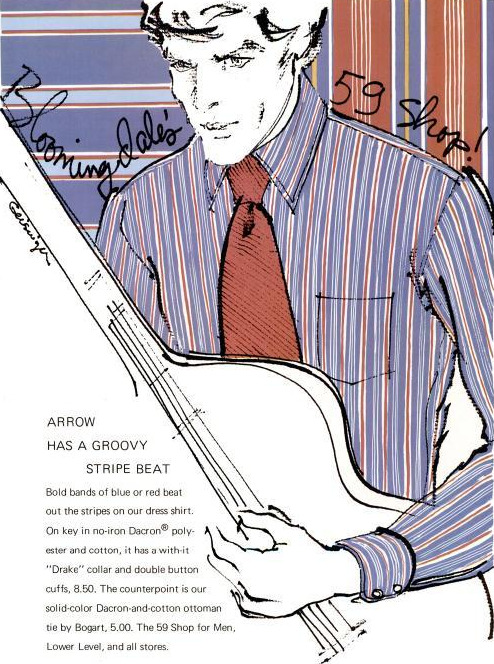
New York
1970 Vol. 3, No. 21
Pocket Tent: Tiny Prefab Home Inflates Itself with Body Heat
Juliawmartinawesome.
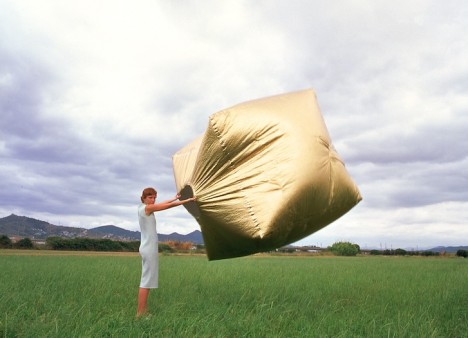
A brilliant application of material science toward simple living, this portable self-inflating structure folds up into a manageable miniature package but expands to create a small dwelling space.

Created by Martin Azua, the Basic House is a genius “habitable volume; foldable, inflatable and reversible … made from metalized polyester” that uses body or solar heat to inflate itself. As its designer explains, “is not a product, rather a concept of extreme reduction.”
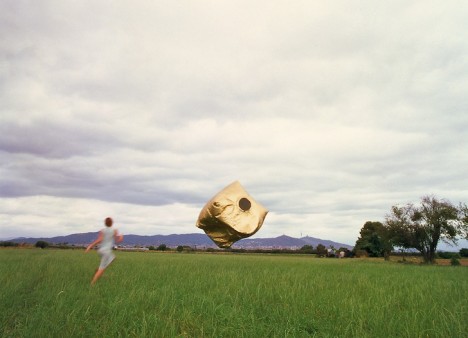
In a clever twist, this tiny portable space is made to be inverted so that it can deflect solar heat (for cold situations) in one configuration but capture it (to warm its interior) when reversed. Versatile and durable, the design could be used for everything from homeless shelters and travel tents to emergency housing and much more.



More from its maker on his motivation: “Our habitat has turned into a space of consumption in which an unlimited number of products satisfy a series of needs created by complex systems and relations that are difficult to control. Cultures that maintain a more direct interaction with their environment show us that the idea of habitat can be understood in more essential and reasonable terms.”
Want More? Click for Great Related Content on WebUrbanist:

Parasite Tent Pods: Vertical Urban Wall Homes for Homeless
In cities around the world, people are feeling the effects of a weak global economy and homeless populations continue to rise. Taking shelter in cardboard ... Click Here to Read More »»
Rough Sleeper: Mobile Backpack Shelter for Urban Homeless
Amid the various conceptual designs for addressing large-scale homelessness, this working prototype stands out as refreshingly realistic, practical and ... Click Here to Read More »»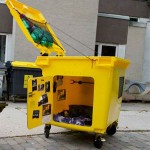
Dystopian Dumpster Living: Trash Bins Turned Tiny Houses
German designer Phillip Stingl envisions a bleak future in which society has collapsed, and a growing population of elderly people live in dumpster houses. Click Here to Read More »»



[ By WebUrbanist in Design & Products & Packaging. ]
[ WebUrbanist | Archives | Galleries | Privacy | TOS ]
$1 fire extinguisher fits in a pocket, can be life saving (video)
Juliawmartinthis is definitely something I want.
 The best ideas aren't always the most expensive ones.
The best ideas aren't always the most expensive ones.
betterbooktitles: Lois Lowry: The Giver In honor of the...
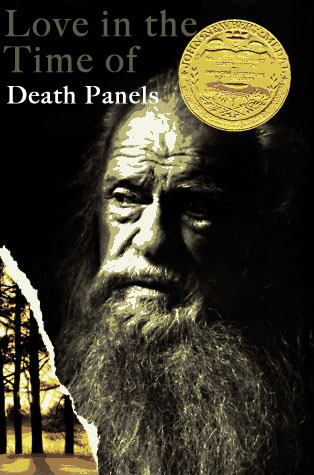
Lois Lowry: The Giver
In honor of the upcoming movie, let’s get some more titles for The Giver!
Artist To Watch: Ryn Weaver
Juliawmartinthoughts? feelings?
I was skeptical for the first 30s but got really into it at the end.
On June 24, a previously unknown singer-songwriter calling herself Ryn Weaver uploaded a gleaming state-of-the-art pop track called “OctaHate” to SoundCloud and became a literal overnight sensation. The song, produced by Passion Pit’s Michael Angelakos, Cashmere Cat, and Benny Blanco and co-written by Weaver and Charli XCX, racked up 30,000 plays on the first day and crossed the 1 million mark within two weeks, buoyed by rave reviews and a small army of adoring celebrities on Twitter — everyone from Paramore’s Hayley Williams to How To Dress Well’s Tom Krell to Weaver’s good buddy Jessie Ware. It all seemed too good to be true — and indeed, instantly people started to wonder whether Weaver’s music was really the result of an organic friendship with Blanco as she asserts and not the product of behind-the-scenes major-label dealings. That’s to be expected in the era of Lana Del Rey, but all evidence suggests Weaver’s grassroots backstory is genuine — it’s just that her grassroots support comes from famous, talented people who’ve thrown a lot of effort into helping her bring her vision to life.
How-To: Make Feathers with Raised Fishbone Embroidery Stitch
Juliawmartinooooooh,



